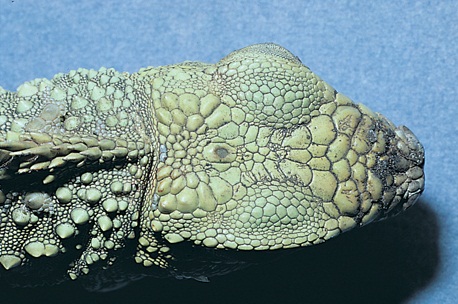Difference between revisions of "Reptiles and Amphibians Q&A 16"
Jump to navigation
Jump to search
Ggaitskell (talk | contribs) |
|||
| Line 11: | Line 11: | ||
|a1= | |a1= | ||
The parietal eye. | The parietal eye. | ||
| − | |l1= | + | |l1=Lizard Eye#Parietal Eye |
|q2=What is the function of this structure? | |q2=What is the function of this structure? | ||
|a2= | |a2= | ||
| Line 17: | Line 17: | ||
It also serves as a dosimeter of light and, as such, helps regulate the diurnal basking activities of reptiles that possess these accessory light-sensitive organs. | It also serves as a dosimeter of light and, as such, helps regulate the diurnal basking activities of reptiles that possess these accessory light-sensitive organs. | ||
| − | |l2= | + | |l2=Lizard Eye#Parietal Eye |
</FlashCard> | </FlashCard> | ||
Revision as of 14:32, 28 October 2011
In some lizards and the tuatara, the paired lateral eyes are augmented by another sense organ.
| Question | Answer | Article | |
| What is this organ? | The parietal eye. |
Link to Article | |
| What is the function of this structure? | The parietal eye detects shadows and, thus, perceives the potential threat of predators. It also serves as a dosimeter of light and, as such, helps regulate the diurnal basking activities of reptiles that possess these accessory light-sensitive organs. |
Link to Article | |
